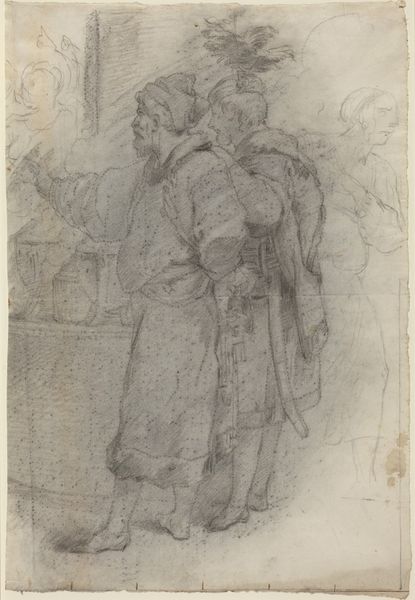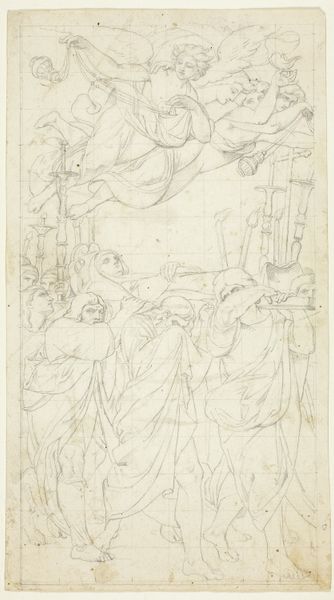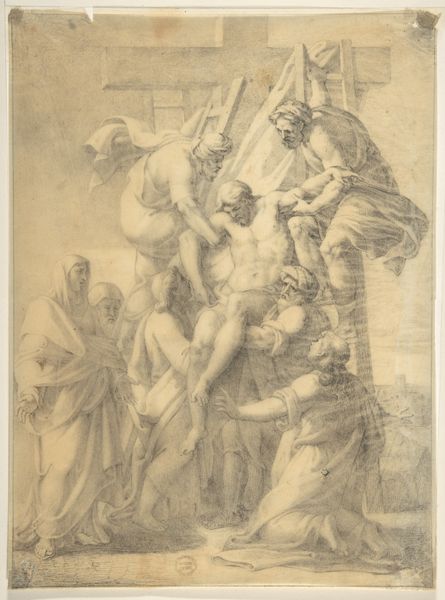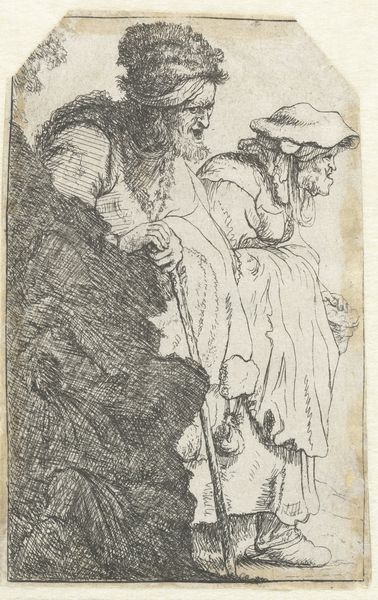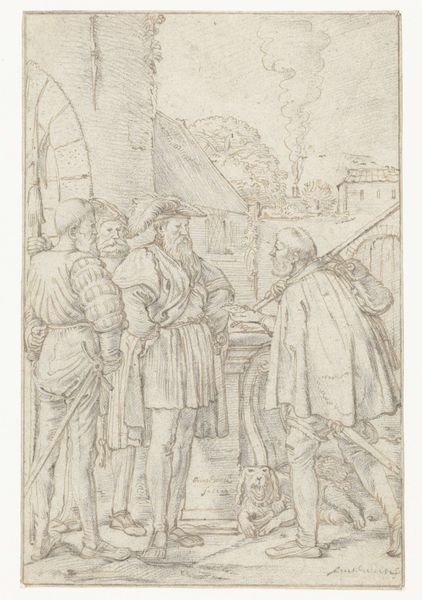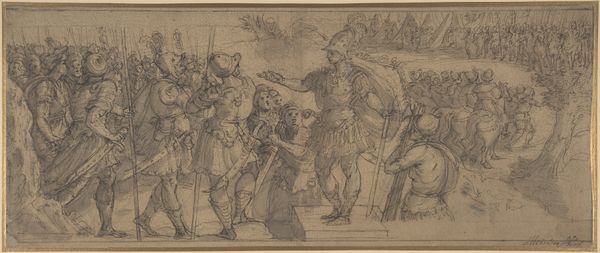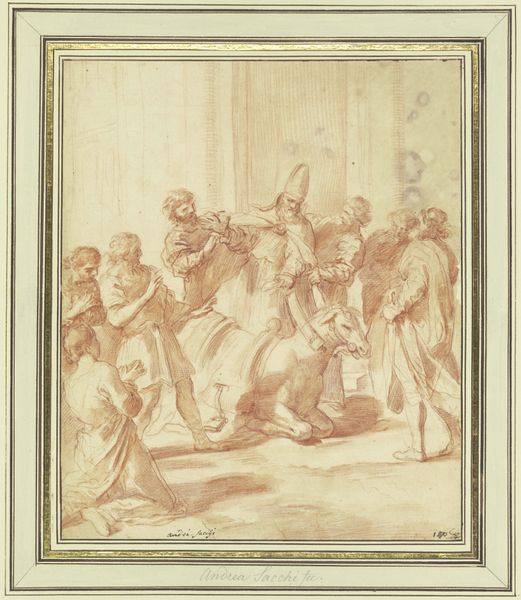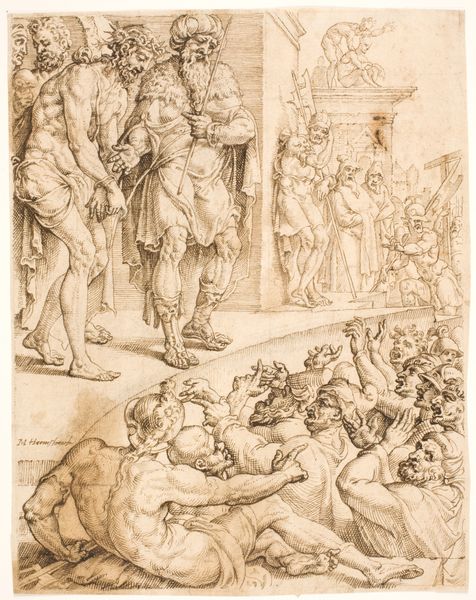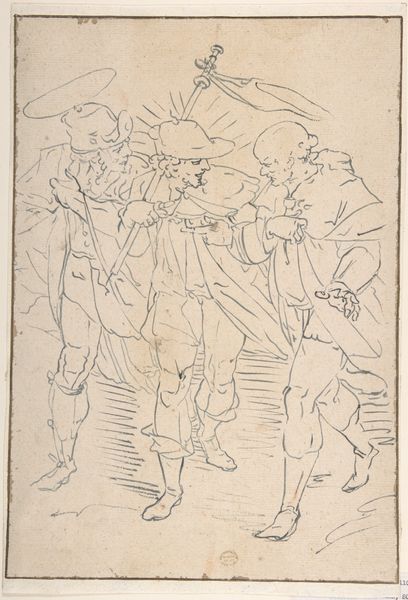
drawing, pencil
#
portrait
#
drawing
#
neoclassicism
#
figuration
#
pencil drawing
#
pencil
#
history-painting
Dimensions: overall: 43.1 x 31.9 cm (16 15/16 x 12 9/16 in.)
Copyright: National Gallery of Art: CC0 1.0
Editor: We’re looking at “Four Standing Warriors,” a pencil drawing by Pietro Fancelli from around 1820. The figures seem caught between determination and worry, and I am curious about this piece, given that it looks more like a sketch with its squared grid than a standalone work of art. What can you tell me about this from a historical perspective? Curator: Good observation about the grid, that gives a valuable clue. Drawings such as this, especially around the Neoclassical period, reveal a lot about the public role and purpose of art. What this preparatory sketch indicates is that this work may have been intended as a study for a history painting – the most prestigious and public-facing genre at the time. The museum functions not only as a showcase for finished paintings, but sometimes displays underdrawings such as this to display artistic intent and purpose. Editor: So, it was a stepping stone to something more monumental? Is that something inherently embedded in the meaning, too? Curator: It definitely gives context! Think about the socio-political climate then. Neoclassical art, particularly history painting, was often used to legitimize power through the heroic or moralizing lens of the ancient past. A museum displaying such works might serve as a vehicle for cultural memory. What sort of values do you imagine paintings such as this were attempting to communicate? Editor: Maybe courage, civic duty… all those “noble” ideals societies want to associate with themselves. The drawing's unfinished nature makes me consider how images get used, displayed and legitimized. I find this particularly potent! Curator: Precisely! Considering Fancelli’s drawing not just as an isolated work but as part of a bigger cultural and political picture shifts how we interpret the finished product, its initial public role, and how museums perpetuate political imagery through their choices in selecting works of art. Editor: That adds such a rich layer to understanding the artwork. I’ll definitely look at art with that lens in mind going forward. Curator: The institution makes the art just as much as the art makes the institution.
Comments
No comments
Be the first to comment and join the conversation on the ultimate creative platform.
